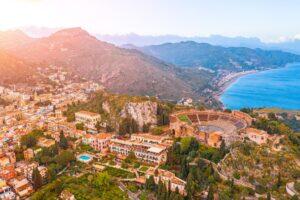Fodor's Expert Review Greek Temple Ruins
Selinunte was one of the most important colonies of ancient Greece, recently discovered to have been home to the largest industrial quarter found in any ancient European city. Founded in the 7th century BC, the city became the rich and prosperous rival of Segesta, making its money on trade and manufacturing ceramics. When in 409 BC Segesta turned to the Carthaginians for help in vanquishing their rival, the Carthaginians sent an army to destroy Selinunte. The temples were demolished, the city was razed, and 16,000 of Selinunte's inhabitants were slaughtered. Archaeologists recently discovered pots with the remains of food inside, proof that some were in the middle of eating when the attackers arrived. The remains of Selinunte are in many ways unchanged from the day of its sacking—burn marks still scar the Greek columns, and much of the site still lies in rubble at its exact position of collapse. The original complex held seven temples scattered over two sites separated by a harbor.... READ MORE
Selinunte was one of the most important colonies of ancient Greece, recently discovered to have been home to the largest industrial quarter found in any ancient European city. Founded in the 7th century BC, the city became the rich and prosperous rival of Segesta, making its money on trade and manufacturing ceramics. When in 409 BC Segesta turned to the Carthaginians for help in vanquishing their rival, the Carthaginians sent an army to destroy Selinunte. The temples were demolished, the city was razed, and 16,000 of Selinunte's inhabitants were slaughtered. Archaeologists recently discovered pots with the remains of food inside, proof that some were in the middle of eating when the attackers arrived. The remains of Selinunte are in many ways unchanged from the day of its sacking—burn marks still scar the Greek columns, and much of the site still lies in rubble at its exact position of collapse. The original complex held seven temples scattered over two sites separated by a harbor. Of the seven, only one—reconstructed in 1958—is whole. This is a large archaeological site, so you might make use of the private navetta (shuttle) to save a bit of walking. Alternatively, if you have a car, you can visit the first temples close to the ticket office on foot and then drive westward to the farther site. Be prepared to show your ticket at various stages.
READ LESS








